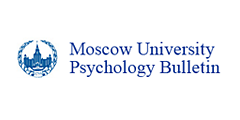
Lomonosov Moscow State University
Moscow, Russia
-
Analysis of Eye and Head Tracking Movements During a Puck-Hitting Task in Ice Hockey Players, Compared to Wrestlers and ControlsPolikanova, I.S.; Sabaev, D.D.; Bulaeva, N.I.; Panfilova, E.A.; Leonov, S.V.; Bugriy, G.S.; Bespalov, B.I.; Kruchinina, A.P.PDF HTML5516“ CITE
Polikanova, I.S., Sabaev, D.D., Bulaeva, N.I., Panfilova, E.A., Leonov, S.V., Bugriy, G.S., Bespalov, B.I., Kruchinina, A.P., (2024). Analysis of Eye and Head Tracking Movements During a Puck-Hitting Task in Ice Hockey Players, Compared to Wrestlers and Controls, Psychology in Russia: State of the Art, 17(3), 63–80. DOI: 10.11621/pir.2024.0305
copied
-
Background. The study of eye-movement strategies of athletes of various disciplines and skill levels is highly significant for sports psychology, since the results can be used in training to improve performance. Such studies are extremely scarce for ice hockey.
Objective. To determine successful eye-movement strategies for ice hockey players compared to wrestlers and controls (non-athletes) during puck-hitting tasks of various degrees of difficulty, using virtual reality.
Design. The study involved 31 participants (male), including 13 ice hockey players (age 20 ± 2.5), 9 wrestlers (age 19 ± 1.9), and 9 controls (age 19 ± 1.3). We used a pre-developed VR-PACE technology that simulates an ice rink in virtual reality (VR). The task was to hit pucks. VR was presented via the HTC Vive Pro Eye with a built-in eye tracker (100 Hz). We analyzed the parameter that reflected the share of puck presence in one of selected retina areas (0–5°, 5–10°, 10–15°, 15–25°, 25–35°) of the left and right eyes and the head.
Results. Ice hockey players exhibited longer puck-tracking using both the near periphery (5–15°) and central retinal area (0–5°). Puck speed had minimal impact on eye-movement strategies, and the visual focus on these areas remained consistent regardless of task type. For both wrestlers and controls, visual fixations in the central retinal area increased when tracking the puck without a motor response, likely leading to higher energy consumption and sensory fatigue.
Conclusion. The optimal eye-movement strategy involves parafoveal tracking in the near periphery (5–15°) and partial foveal tracking (0–5°), allowing for better object information retention and efficient puck trajectory tracking with reduced energy expenditure.
DOI: 10.11621/pir.2024.0305
Keywords: hockey/ virtual reality/ eye movements/ eye tracking/ eye-movement strategies
-
-
Characteristics of Silent Counting in Synchronized Swimmers
-
This article describes the temporal characteristics of silent counting as used during a competition by the Russian youth team of synchronized swimmers. The athletes listened to the music that accompanied their performance at the competition. Diff erent indices of silent counting were defi ned, such as the beginning and cessation of diff erent periods of counting, counting frequency, the stability of the temporal structure of silent counting, the degree of synchronization of silent counting at diff erent moments during the sports program. We studied the relationship of these characteristics of counting with expert estimates of the athletes’ sense of tempo, coordination of movements, and choreographic abilities.
DOI: 10.11621/pir.2012.0031
Keywords: synchronized swimming, synchronicity of movements, silent counting, regulation of motor activity
-









